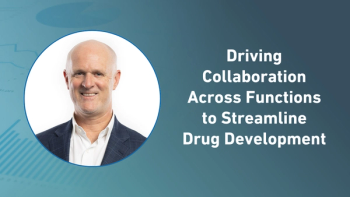
- Applied Clinical Trials-12-01-2020
- Volume 29
- Issue 12
E6 (R3) on Horizon
Recent webcast addresses what organizations can do to prepare for the next revision of ICH E6.
As the new calendar year approaches, organizations are beginning to look forward to understanding the impact of ICH E6 (R3) in the fourth quarter of 2021. Despite E6 (R2) being released just four years ago, the industry is still facing difficulties in adhering to these current regulations.
A
The webcast featured insights from three industry leaders; Crissy MacDonald, PhD, Executive Director, Client Delivery, The Avoca Group; Andy Lawton, Consultant, Risk Based Approach Ltd, and Elvin Thalund, Director, Industry Strategy, Oracle Health Sciences.
E6 was originally released in 1996, creating the first guidance for clinical trial context. In 2016, revisions were made to these regulations for the first time in 20 years, forcing an industry-wide shift as it attempted to adjust. With another update to E6 expected in 2021, there will be a gap of just five years between revisions.
“What we’re seeing is a shrinking timeline of these regulatory guidance revisions, and it’s likely related to the rapid changes in technology’s clinical trial design approaches,” said MacDonald. “We need to become more adept at adjusting our internal policies and procedures to comply with these newly changing regulations.”
Lawton highlighted the revisions to E6, as well as the latest revisions to ICH E8, that will encourage greater use of quality tolerance limits (QTLs). “Quality tolerance limits give us that one perfect gift of avoiding perfection, because we write our plans as if we’re going to achieve perfection,” he said. “We can move away from that definition of perfection to a defined quality basis.”
Currently, organizations use a trial-reporting system that includes a completely separate process for quality checks after the fact. “There’s [currently] a whole secondary process, in this case a TMF (trial master file) process, where now the true regulatory quality is being assessed. The solution could be a system which considers quality from the very beginning. It would include training operational staff members on ICH regulations and implementing quality checks early in the process,” Thalundsaid.
“When you then start receiving them (documents), you can now ensure your quality control based on the quality you had defined from the beginning,” Thalund said. “That’s where you now have quality by design built into your system and process.”
The E6 (R3) concept paper states that R3 will be a full rewrite and reorganization of the GCP (good clinical practice) guidance with a focus on the applications of GCP principle to the increasingly diverse trial types and retaining concepts already present in R2.
While MacDonald noted the industry’s tendency to have a reactive approach to new regulations, when it should be more proactive. “[The industry’s reactive approach] drives a decrease in adoption because there’s concerns without a clear understanding of what those regulatory expectations are,” she said.
To address this, MacDonald referred to the Pharmaceuticals and Medical Devices Agency (PMDA)’s idea of “horizon scanning.” This concept will consist of “scanning the horizon” to find emerging technologies in order to proactively prepare and make the necessary regulations a priority.
Although the ICH E6 (R3) revision is fast approaching, models such as horizon scanning and streamlined operational processes should be able to help organizations adjust to the newest set of regulations.
Andy Studna is an Assistant Editor for Applied Clinical Trials. He can be reached at
Articles in this issue
almost 5 years ago
Industry Forced to Rethink Patient Participation in Trialsalmost 5 years ago
Top 5 Global Clinical Trial Disclosure Changes in 2020 Amidst Pandemicalmost 5 years ago
Managing Risks in Clinical Trials During a Pandemic with ICH E6 (R2)almost 5 years ago
Applied Clinical Trials, December 2020 Issue (PDF)almost 5 years ago
Importance of Diversity in Parkinson’s Researchalmost 5 years ago
Regulatory Data: How Technology Can Help ClinOps Survivealmost 5 years ago
Decentralized Trials, Pros and Consalmost 5 years ago
Public Trust and the ‘Last Mile’ for COVID-19 Vaccinesalmost 5 years ago
The Ever-Changing Face of NICE Guidance on Drug InnovationNewsletter
Stay current in clinical research with Applied Clinical Trials, providing expert insights, regulatory updates, and practical strategies for successful clinical trial design and execution.






.png)



.png)



.png)
.png)
